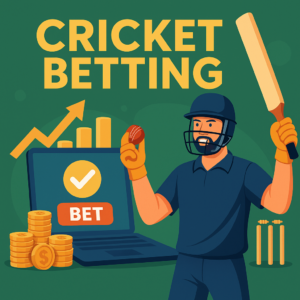In today’s digital age, mobile apps have become essential tools for businesses, creators, and developers. With millions of apps available on app stores, standing out and attracting users can be an uphill battle. That’s where app marketing comes in. To see growth and success, app developers must go beyond building a great product—they need to effectively market it. This is especially true for white label app marketing, where businesses leverage third-party solutions for branding and customization, making effective promotion even more crucial.
App marketing is not just about pushing ads or sending promotional messages. It involves a comprehensive approach that includes everything from research and user acquisition to retention and monetization. By strategically targeting potential users and maintaining engagement, you can ensure your app thrives in a competitive marketplace.
Let’s dive into the key elements of effective app marketing.
1. Know Your Audience
Before doing anything else, it’s crucial to identify and understand who your app is for. Knowing your target audience allows you to tailor your marketing strategies to meet their needs and preferences. This initial step is essential for shaping the direction of your marketing campaigns.
Start by creating user personas. These are detailed profiles that represent the different types of users who might use your app. Each persona should include information such as age, gender, location, interests, and behaviors. By gaining insight into what motivates your audience and what challenges they face, you can better position your app to meet their expectations.
In addition to demographics, also consider psychographics—things like lifestyle, values, and pain points. These aspects help you create messaging that resonates more deeply with users, increasing the chances of conversion.
2. App Store Optimization (ASO)
Just like search engine optimization (SEO) for websites, app store optimization (ASO) is key to ensuring your app gets discovered. ASO refers to the techniques used to improve the visibility of your app on app stores, which in turn boosts downloads and user engagement.
The first step in ASO is selecting the right keywords for your app. These keywords should be relevant to what your app offers and should reflect terms that potential users are likely to search for. Place these keywords in your app’s title, description, and tags to enhance visibility.
Next, optimize your app’s icon, screenshots, and video previews. These visual elements are the first thing users see when they come across your app, so they need to be compelling. High-quality visuals and a short, engaging app preview video can significantly improve the first impression users get when they come across your listing.
Positive reviews and ratings also play a significant role in ASO. Users are more likely to download an app that has high ratings and good reviews. Make sure you encourage users to leave feedback after they’ve experienced the app, and respond to their concerns quickly to show you value their input.
3. Social Media Marketing
Social media platforms are powerful tools for reaching new users and building a loyal community. In today’s world, almost everyone spends time on platforms like Facebook, Instagram, Twitter, LinkedIn, and TikTok. These platforms give you an opportunity to showcase your app in creative ways, directly engage with your audience, and build awareness.
Start by identifying which social platforms your target audience frequents. If your app appeals to a younger crowd, you may want to focus on TikTok or Instagram. For professionals, LinkedIn could be the best fit.
Create engaging content that highlights your app’s features and benefits. Share testimonials, behind-the-scenes looks, and success stories to build trust with your audience. Run contests, giveaways, and limited-time offers to drive engagement and increase awareness.
Paid social media advertising is another powerful tool to target specific audiences based on interests, behaviors, location, and more. By investing in well-crafted ad campaigns, you can get your app in front of a highly relevant audience and increase downloads.
4. Influencer Marketing
Influencer marketing has become one of the most effective ways to build credibility and increase downloads for your app. Collaborating with influencers in your app’s niche allows you to tap into their established audiences. Their endorsement can carry significant weight, particularly if they have a strong and authentic following.
When choosing influencers to work with, look for individuals whose values align with your app and who genuinely connect with your target audience. Influencers should create content that feels natural and fits with their brand while still showcasing your app in a positive light.
5. Referral Programs
One of the most effective ways to boost user acquisition is through referral programs. People trust recommendations from friends and family more than they trust ads. Referral programs tap into this by incentivizing users to share your app with others.
Offer rewards to both the referrer and the referee. For example, users who refer a friend could receive premium features, in-app currency, or discounts on subscriptions. Similarly, new users who sign up using a referral link might receive a welcome bonus.
Referral programs work because they leverage the trust and social proof inherent in personal relationships. When users recommend your app to their peers, it creates an organic form of marketing that is highly effective.
6. Content Marketing
Content marketing is a long-term strategy that can help you build brand authority and trust. By producing valuable content such as blog posts, tutorials, case studies, and videos, you position your app as a thought leader in its niche. This content not only attracts users but also helps with app retention.
For instance, if your app helps people manage their finances, you could create blog posts about budgeting tips, saving strategies, or investing basics. By providing valuable information, you build a relationship with your audience that goes beyond just the app itself.
7. Email Marketing
While email marketing might seem like an outdated tactic, it remains one of the most effective ways to engage with users. Collecting user email addresses and sending personalized, relevant messages can keep users interested and engaged with your app.
For new users, send welcome emails that highlight key features and benefits of your app. For existing users, create segmented email lists to send targeted messages based on usage patterns, preferences, or behaviors. You might want to send reminders about in-app promotions, new features, or updates that could reignite interest.
It’s also essential to send re-engagement emails to users who have become inactive. These emails can include exclusive offers or updates that encourage them to come back and use the app again.
8. User Experience (UX) and User Interface (UI) Design
A smooth, intuitive user experience is vital for user retention. If your app is difficult to navigate, prone to crashes, or lacks key features, users will quickly abandon it. Your app’s design should be visually appealing, user-friendly, and efficient.
Make sure your app’s onboarding process is clear and simple. The first interaction a user has with your app sets the tone for their entire experience. A poorly executed onboarding process can lead to frustration and drive users away.
9. Paid Advertising
While organic growth is essential, sometimes paid advertising can provide that extra boost to help your app reach a broader audience. Whether through Google Ads, Facebook Ads, or ad networks like AdMob, paid campaigns allow you to target specific demographics, interests, and behaviors.
Start with small, targeted campaigns to test different messaging, visuals, and audiences. Monitor the results and adjust your ads based on the performance. Paid ads can drive significant traffic, but only if they’re well-targeted and aligned with your overall marketing strategy and technology. Using the right technology to optimize and automate your ad campaigns can improve efficiency and lead to better outcomes.
10. App Retention Strategies
Acquiring users is only half the battle. If you want your app to succeed in the long run, you must focus on retaining those users. A great app marketing strategy should include retention tactics to keep users coming back.
In-app notifications and push messages can remind users of the value your app provides. Don’t overdo it, though—too many notifications can lead to annoyance and app uninstalls. Instead, send thoughtful, relevant messages that provide value, like new feature alerts, special promotions, or personalized suggestions.
Conclusion
App marketing plays a critical role in the success of your mobile application. It’s not enough to simply create an app and hope that users will find it. By strategically promoting your app through various channels and maintaining a focus on the user experience, you can ensure steady growth and long-term success. From ASO and influencer partnerships to email marketing and referral programs, there are countless ways to reach potential users and keep them engaged. Remember, the key to growing your app lies in consistent effort, thoughtful strategies, and continuous optimization. Keep your audience’s needs at the forefront, and your app will thrive in an increasingly competitive digital marketplace.


